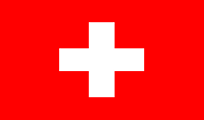A new home for Bordeaux varieties in the Central Valley
Almost 200 years ago, the French brought their grapes to Chile’s Valle Central.
One can only marvel at such dimensions in Europe: Chile’s most important wine region, the Central Valley or Valle Central, stretches 1000 kilometres from north to south. In the west, it is separated from the Pacific by a low coastal mountain range, the Cordillera de la Costa. To the east, the imposing Andes form the border with Argentina. In total, the growing region covers around 200,000 hectares of vineyards. The climate is predominantly Mediterranean, but fresh air from the Andes flows into the vineyards at night and cools them down – an ideal terroir for European noble varieties. Thanks to French immigrants, they have been at home here since 1830.
Merlot becomes Carmenère
This resulted in a momentous mix-up. Among the grapes that found their way across the ocean was Carmenère. It was once part of the classic Bordeaux varietal blend, but in the Bordeaux climate it turned out so rustic that winemakers there gradually eliminated it from their vineyards. In Chile on the other hand, the grape immediately took to the land. But unfortunately – it was mistaken for Merlot! It was not until 1997 that wine experts realised the mistake. Since then, Carmenère has become the country’s flagship wine. In the Central Valley, it dominates alongside the Cabernet Sauvignon and Merlot red grape varieties. White wine is mainly made from Sauvignon blanc and Chardonnay.
The best Cabernets in Chile
Two sub-regions of the Central Valley in particular have made an international name for themselves. Firstly, there is Maipo to the south of the capital Santiago. It’s not called the «Bordeaux of South America» for nothing: The best Cabernet Sauvignons in the country grow there. The second well-known sub-region is called Curicó – only discovered in the 1970s and now world-famous.






Validate your login